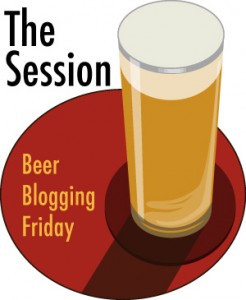
Community Beer Works, a brewery not a blogger is hosting the first session of 2016 and has a question for us….
“The topic I want you all to write about: “Are breweries your friends?”
To be in business nowadays you pretty much have to have a social media presence. This is especially true in the beer world, where some breweries have basically built themselves on their personality. And yet, at the end of the day, we’re also selling you something.
I believe this is the first Session to be hosted by a brewery rather than beer blogger. How do you feel about that? Do you want your feeds clear of businesses, or do you like when a brewery engages with people? Can you think of anyone who does it particularly well, or poorly? As the person who does our social media, which I think is very good (although not quite good enough), I struggle with this problem. I’m on both sides, and rather than come to any sort of conclusion of my own I thought I would make all of you write about it.”
The short answer is no. Much like Corporations are NOT people (looking at you Supreme Court). A brewery is just a brewery. You may be friends with everyone who works there and be greeted when you walk in the door but that is it.
To me, if I recount my Schoolhouse Rock correctly, you can be a person, place or thing. A brewery is a place. It can be a great place. A place where you had your most favorite beer. A place where you met your now best friend. A place to go after work. It can be amazing but it is still just a building with people and equipment in it.
Whatever construct that Facebook or Instagram or Twitter uses to denote friends, likes, hearts just allows you to follow a brewery at a distance. Sometimes to close and troll-y for a sane person’s liking. But it is simply a way to advertise that puts you on screens in front of people who have, at least once, pressed a button that said “Friend”.
So, no, even my mostest, favorite brewery is not my friend. But I do not think that what they post to social media is unnecessary. Quite the opposite. It is vital, in my opinion, that breweries engage on all fronts of social media.
Most do not have the time and would obviously rather pick work to do from the brewery to-do list before sitting in front of a computer to update a website or post a tap list. But a brewery needs to put itself in front of eyeballs that will eventually get up out of their seats and put down their phone and buy a beer (or two). Unfortunately, those eyeballs are not hanging out in one spot. Facebook is big but has a uncool sheen to it and “the kids” have migrated to Instagram but Twitter is still big, as is Untappd. So a brewery needs to be in each spot when it comes to the advertising aspect.
And it is a matter of playing to the strengths of each social media platform. Facebook is great for events and getting across bigger chunks of information. Twitter is great for updates on new beers being tapped and Instagram can be utilized to show off gleaming new equipment or photos of brewers brewing a new beer. Then keep your Untappd beer list current and streamlined so that fans can do your advertising work for you. If you want to Reddit, Snapchat or Vine then do that too.
What a larger customer base needs from its brewery “friend” and what I need as a beer blogger and a beer geek are different. For me, the foundation is a website that has three specific items. The hours, the current tap list and some detailed information on (at least the core) beers. The best example (that goes above and beyond) I can give is the website for Beachwood BBQ & Brewing. They have a full list of beers brewed with descriptions for each. They have a “Hopcam” that is pointed at the on tap list so you can see, in real time, what is on tap. You can see what beers are in the pipeline too! They have their upcoming events updated with plenty of information about each. I do not have to go to any other spot on the interwebs when it comes to Beachwood. That saves me bandwidth, which I appreciate.
There will always be exceptions to my “golden” rules. Breweries that don’t need a website or eschew interaction on the internet and there is the biggest exception…
… because in the final analysis, if the beer stinks, it doesn’t matter how well you communicate and how friendly you are.